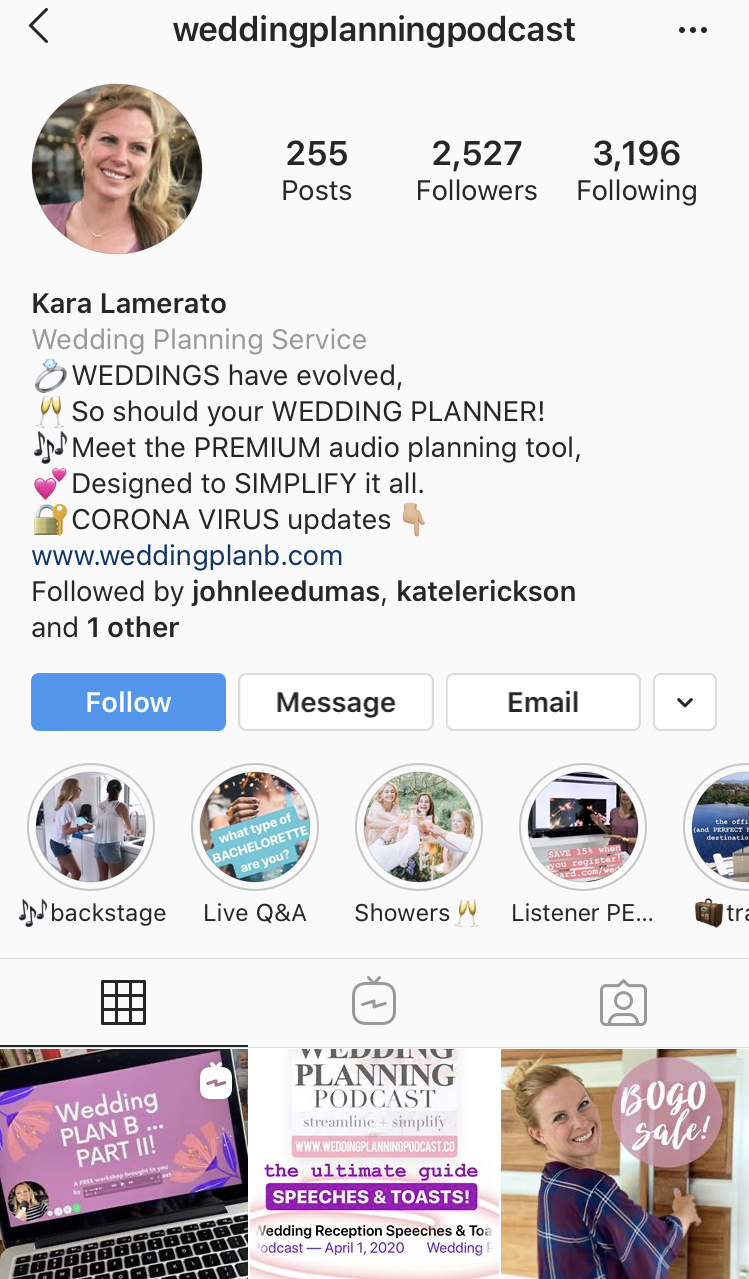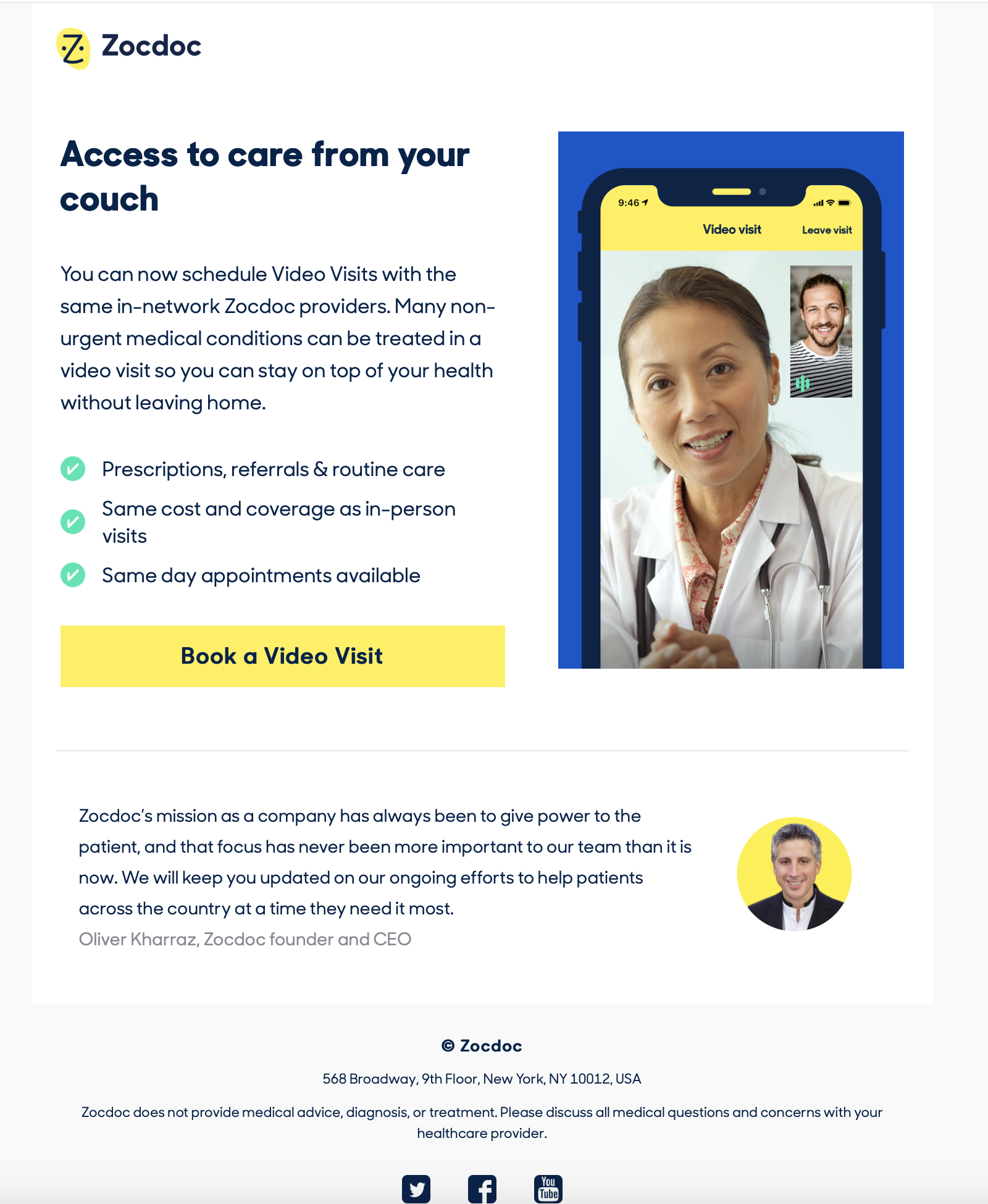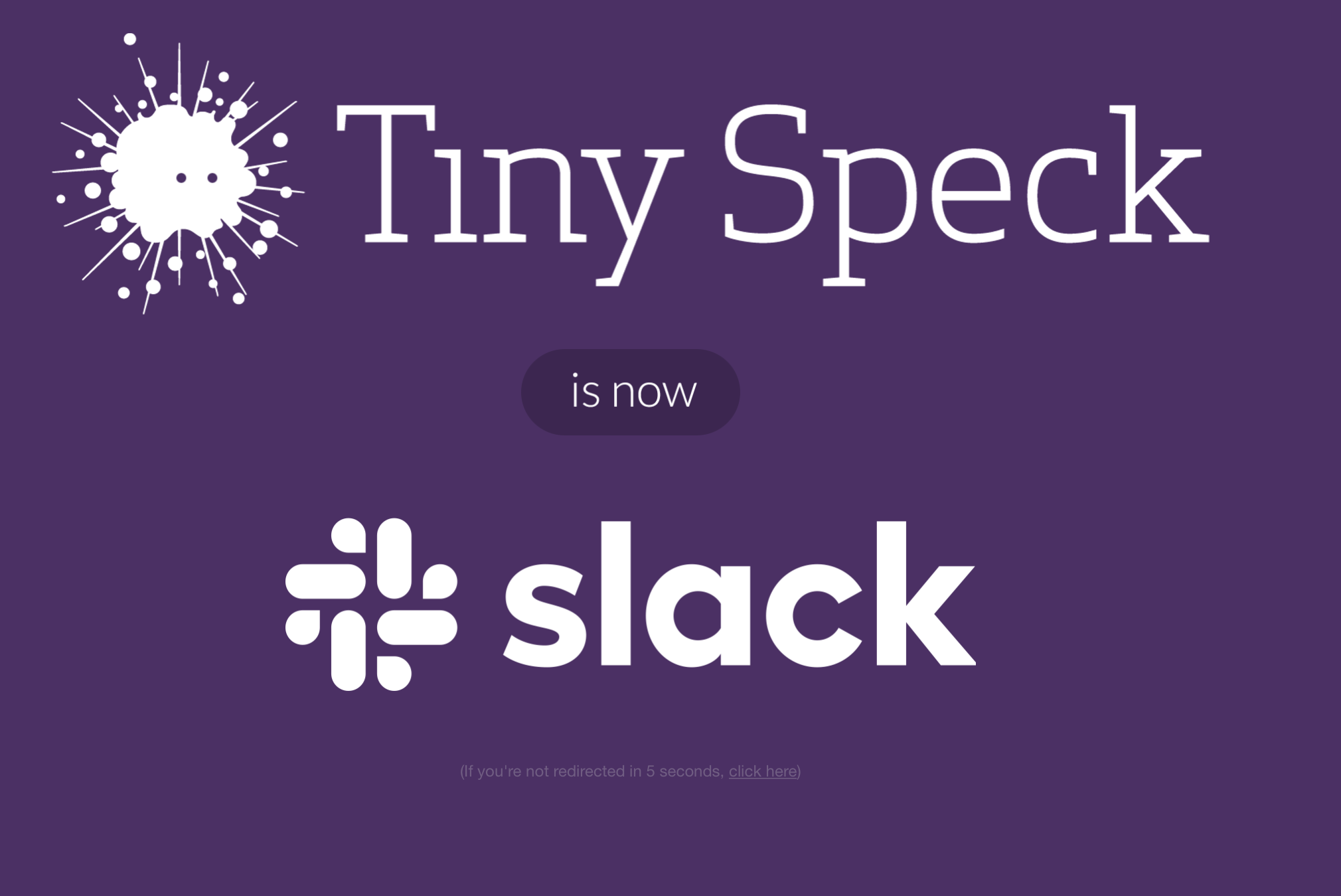Going through a crisis can be an opportunity to do things you might have never thought of doing before!
In fact, as we face the recession caused by the COVID-19 pandemic, it is critical to think of making the necessary changes and pivoting!
In the first part of this three-part series, we first looked at how you can effectively assess the challenges and opportunities for your business.
In this second part, we will explore the 6 ways in which you can use this assessment to help you pivot, developing new ideas to recession-proof your business.
This blog article is a summary of the related podcast episode.
Click here to listen to the tips mentioned in this article.
While you don’t have to focus on coronavirus in your marketing or make everything about it, you do need to address it and you do need to be prepared to pivot to build a recession-proof business!
Even if your business is booming, as I know some businesses are as a result of this crisis, there may be more ways that you can grow your business through a simple pivot.
I’m going to share six ways that you can pivot your business – depending on your assessment of your opportunities and challenges, you may need more than one!
1. Language
Right now, you need to be thinking about the vocabulary, tone, and content that you are using to promote your business and to communicate with and serve your clients.
For example, with this crisis started and lockdown was introduced, many of my clients were telling me they felt uncomfortable with selling and marketing their business. They were starting to feel that this wasn’t a time to do business. I realized that I need to do something to help my clients and my audience deal with these self-limiting beliefs so that they could move forward and focus on their businesses. And so, if you look back at my recent episodes you will see that I focused on these addressing these beliefs, objections to selling, and the challenges that my audience was facing.
I needed to step back and convince my audience that they could do it, by using self-care, building resilience, and giving them tools and strategies to move forward. In other words, I pivoted my content to respond to the crisis.
How might this apply to your business? If you look back to the first episode in this series, I looked at the psychological aspects of this crisis’ impact. What are your audience and your clients going through and how can you pivot your language or content to address that?
This language pivot is so important – this is the one pivot that everyone needs!
Here is another great example, from my client, Marcelle Yeager of Career Valet. Marcelle helps people find jobs. Just before this crisis, she was about to introduce a new product in collaboration with a career coach. This product was specifically designed for people who were already in a job but who wanted to find something new.
Marcelle and her partner were literally just about to launch as the coronavirus crisis hit. I immediately reached out to them to discuss changing the language in her marketing plan because it was clear that very few people were going to want to leave a secure job. So we used one of my favorite questions from Michael Hyatt – ‘What does this make possible?’
I am summarizing a much more complex process, but Marcelle, her partner and I worked on this – and the answer was that lockdown makes it possible to start working on future career plans. We also showed that not everyone was stopping, lots of companies were still hiring.
Based on this strategy, Marcelle and her partner rewrote their whole product description and content with the right language to address the objections. While pivoting their language, they also put in place weekly Q&A sessions to address questions. Thanks to this pivot, their audience kept growing and attracted many new leads interested by this new product, despite the recession!
And this is what can happen when your pivot rather than just stopping.
Here’s one more example with Monday.com of how you can pivot your marketing without even mentioning ‘you know what’.

Monday.com helps teams work together and communicate, is a project management tool and an amazingly successful startup. Their pitch is all about team communication, productivity and effectiveness.
They introduce a new campaign which specifically doesn’t mention COVID-19, it just focuses on working remotely, something we are all doing now. You don’t have to talk about the crisis to simply address the issue and show how you can solve a problem.
So what does this mean for you? What does this situation make possible for your clients? How does what you offer make something possible for them and how can you show that through your content, the way you promote or explain your product or service?
So hopefully now you understand why I think this is one pivot that everyone needs to make and the first one you need to introduce.
You also need to make sure that your language stays appropriate to your business. It might be better not to talk about coronavirus at all. In fact, if what your audience wants from you is relaxation and an escape, then it would be better not to mention it. For example, if your business is entertainment, then give them the entertainment that they need. If you’re a musician, for example, you’ve seen a lot of singers who would go live online to simply entertain you and support you and bring you joy. They don’t necessarily need to talk about the crisis, but they are doing something. They have been pivoting by simply showing up during these times.
Addressing the crisis does not mean that you have to always name it in the language you use.
No matter how you pivot your language, make sure that all your communication whether you are promoting products or services, sharing a blog or on creating content for social media, is purposeful and intentional, so that it supports your audience and your clients at this time.
The most important here is don’t stay still or passive. You need to address it, adapt, and then take action!
2. Product/service
Do you have a product or service that you cannot sell right now because of lockdown? Can you pivot to stay relevant?
For example, the wedding planner Kara Lamerato, was impacted immediately by the lockdown with people putting weddings on hold. However, she pivoted her service to move to support her existing clients through all the changes with tips and hints on handling cancellations and managing costs and then to help people using lockdown to plan in advance for the sort of wedding they want in the future. She called her new services “Wedding Plan B”


Hopefully you can see how pivoting her services allowed her to remain relevant to her existing clients and attract new ones.
The big message here is that if you already have a business with customers, you cannot just cut off communications with them now!
You can’t wait for things to get better, you really have to nurture those client relationships at this time. Now is the time to give as much as you can.
Another great example of this is my personal trainer. Usually his clients work with him at the gym which clearly isn’t possible now. So he has created a challenge that has helped me be even more in touch with him than ever before. He launched a 30 day challenge – everyday he sends a video with some exercises to do, and then I actually have to give him a report back and tell him how it went, and even take videos and pictures to prove that I’ve done it!

Now I have never worked out every single day in my life before but this challenge has helped me do that, even in lockdown. I’ve been blown away by how he has pivoted to show up for his clients!
And that’s what is so important right now – showing up for your clients and your audience in a way that is really relevant to what they need.
3. Business model
In the first part of this series, I shared with you the experience of Creative Mornings. This event company ran events all over the US but their CEO had always refused to offer online events – she felt they just would not be able to offer the same experience. However, the coronavirus pandemic forced her to take her entire business online and completely change her business model.
She has been sharing online how blown away she has been by the response and now, with this new model, how many more business opportunities she can see for the future.
The ZocDoc app is another great example of a business that has pivoted its model in response to the current crisis. ZocDoc was originally set up to help users find a doctor in their neighborhood and payment was based on an appointment being made. With concerns about exposure themselves and others to coronavirus preventing many people from seeing a doctor in person, ZocDoc pivoted to become a platform for doctors to offer virtual consultations. This pivot has completely transformed their business and allowed them to attract more doctors and users.

So look at your business model and see what you can do or what technologies you can use to be able to innovate and pivot!
4. Pricing
I’m going to get straight to the point – discounting your prices is not the way to go! I do want you to understand that there is a difference between a discount and creating a special offer.
Let me explain. Let’s say your regular price for a product or service is $100. You might be thinking that you need to discount that to $60 because of this crisis. Don’t do it. What you should do instead is create a new offer, with an affordable price that has different features, or different support that is a better fit for your clients’ current situation. Even if you want to create something more affordable, don’t just take what you have and cut the price.
What you need to do is look at how you can still serve your customers. Maybe you look at an existing product and remove some features. Perhaps you can offer a flexible payment plan. If you cut your prices, there’s a bug chance that you are also cutting your margins. Cutting your margins will impact your effectiveness and your productivity and ultimately hurt your business! Right now your job is to keep your business running and being profitable – without this, you can become a liability to the economy.
Make sure to keep your business afloat and to keep it profitable!
I want to briefly mention what an offer is. Usually you think about selling a product or a service. An offer is actually a combination of a product and services. For example, I have an online course to help you start or grow your business and build the healthy foundation of a portable business. So that’s my product. But once you will join my product, I will give you a series of extra services around it to help you make it even a better experience. These extra services might include, for example, a live question and answer session and bonus materials such as workbooks.
Right now, you need to think about your service or your product and how you can create a whole package of extra value around it. Maybe you can even increase the price of your product because you’ve added so much value. You may also be able to keep your product’s current price, because you’ve added so much more value and made it really interesting and attractive to your customers.
Also when you think about pivoting to offer better value for your customers, the goal is not to add more work by you for the same price! Make sure to be very smart when you think about upgrading your offers with extra elements so that it is not costing you too much in terms of your time and resources. Think about repurposing things you already have.
Also, adding value isn’t just about quantity. Overwhelming your customer with too much is not a good idea and can lead to them not seeing the value in your business. Focus instead on the transformation you want to provide for your customers and then what you can do to make that experience better.
In addition, you want to make sure that your product or service can exist without the bonus elements you are offering. The bonus elements should just be extra value, not all the value. For example, I recently ran a weekend workshop. I intentionally offered it over the weekend to make it easier for clients who are homeschooling kids in lockdown during the week to attend. During the workshop we worked on creating recession-proof business plans for attendees’ businesses.

However, to enhance the experience of my workshop, I added a Facebook group where attendees could ask me more questions, where I could continue to support them informally and where they could support each other. This is a good example of something that doesn’t require a lot of my time but adds huge extra value. However, for those that didn’t want to participate in the Facebook group, they still got the same value from the workshop itself.
How can you create something additional that enhances your customer’s experience, while ensuring that your product still delivers results and value without your added extras?
5. Niche
If you’ve been listening to the Tandem Nomads podcast for a while and follow me on social media, you know how many times I’ve said how important it is for you to target a very simple and specific niche. So even during a recession, you need to be very specific about who you want to target! And in our current crisis, you might have a niche where you can be even more compelling or effective or one who needs you even more right now.
Maybe you cannot serve your current niche right now but there is another niche that right now needs you. For example, catering firms that serve airlines have a huge crisis right now because there is so little air travel. Some of these companies looked at who might be needing high volumes of prepared food right now and came up with the idea of hospitals, whose facilities are currently overwhelmed.
Whether you have an existing business or are planning to launch one, you need to think about who needs you now and consider pivoting to serve them.
Another great example is a client of mine, Rhoda Bargeter. She is a multicultural expert and coach, helping multicultural families deal with the communication issues that can arise from life on the move and having different cultural backgrounds in one family. On top of that, she’s had years of experience of and skills in solo parenting, while her husband traveled to different countries for work.
This is something that many expat families are experiencing right now. One partner has to stay and work in one country, while the other partner has to go home and homeschool the kids until they can figure out the next step. Suddenly, a lot of expats are solo parenting, while dealing with homeschooling! Rhoda has pivoted to begin serving these families and provide support for them at this difficult time.
This is exactly the sort of situation where pivoting makes you even more relevant than your initial business idea!
6. Your whole business
This is a big one!
Sadly, you might have a business that is truly struggling and really not relevant. It might be that it was struggling before this crisis
So if you are in this situation, maybe this is the time for you to question how can you pivot your whole business!
One option here is to start a whole new business that’s more relevant now. To do this, you need to identify what assets you already have in your current business that you could combine with other assets, perhaps from other areas of your expertise or experience, to completely transform your business.
The story of a company called Tiny Speck is a great example of a business that did just this. Tiny Speck was a gaming company and in 2007/8, it was really struggling due to the financial crisis. They looked at their technological assets and intellectual property (IP) and pivoted to become Slack. Slack is now one a very well-known app that helps teams communicate and manage their work. They completely transformed their business, using an asset that wasn’t initially core to their original business idea at all.

Maybe you have an intellectual property or a trademark or technology, but maybe you have a skill, a concept that you created or other assets that you could use to transform your business.
While I’ve given you six different ways to pivot your business, I want to really emphasize that the most important in a crisis is the first – language. No matter what, I highly recommend that you consider that one, above all others. Finally, no matter what you do in terms of doing pivoting, there’s one crucial question you need to answer.
What problem are you solving by pivoting?
This is THE crucial, important question that you need to be able to answer in order to be effective. When you pivot, ask yourself, what problem am I solving for my clients when I do this and are people going to want to pay for this? This is the key to a successful pivot.
Make sure to check out the rest of the series:
Ep 163 – How to create your recession-proof business now! Part 1: Assess
Ep 167 – How to create our recession-proof business now! Part 3: Super Serve

